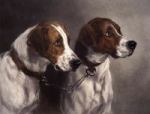
Catalogue
 Browse Browse
 Full search Full search
 Latest updates Latest updates
Ordering
 To order To order
 Discounts Discounts
 Postage Postage
 Guarantee & Returns Guarantee & Returns
Information
 Condition Condition
 Terms used Terms used
 Printing techniques Printing techniques
 Colouring & cleaning Colouring & cleaning
 Images on these pages Images on these pages
Testimonials
Resources & Links
~ Related Websites ~
Intaglio-fine-art

'Pick of the Pack'
Over 5,000 hand printed and coloured etchings and engravings from original, mostly antique, intaglio printing plates.
Privacy
Contact details
|
Information - Printing Methods
 WOODCUTS WOODCUTS
A fairly simple process dating back to at least medieval times.
The design is drawn onto a block of smooth seasoned softwood and
then with a knife the cutter removes the unwanted areas of block,
leaving just the design to be reproduced as raised areas. This
is then inked by hand or roller and paper applied with light pressure
in a press. This method was used for most early book illustrations
during the fifteenth and into the sixteenth centuries.
Usually woodcut prints and maps were fairly simple and crude looking
compared to images from copper plates, although the work of Albrecht
Durer illustrated the sophistication that could be achieved.
Woodcuts can normally be detected by this crude appearance and
the flat feel of the printed areas when touched. Sometimes there
is a slight indentation of the paper where printed, pressed in
by the raised image.
Due to a shortage of good copper plates and a lack of skilled
engravers woodcuts were also used for some early maps, such as
those by Munster and some of the editions of 'Ptolomy's Geographia'.
Often, hybrid woodblocks would be used, with metal type set in
holes in the the woodblock for areas of text.

This is an enlarged section (about 1 inch across) showing the
Gloucester and Hereford area of Sebastian Munster's "Beschreibung
Engellandts und Schottlandts", 1578.
 WOOD ENGRAVING WOOD ENGRAVING
Developed during the eighteenth century, this method used a
block of hardwood instead of softwood as the base, boxwood being
the most popular. The wood was engraved on the hard end-grain
with tools similar to those used for line engraving on metal,
with hardwood far more delicate detail could be produced and the
block was longer lasting. Often wood engravings can be detected
by the way the printed lines are impressed into the paper.
 Thomas Berwick was the first great
master of wood engraving during the late 18th century in Britain
and is credited with founding the English school of wood engraving.
This is a detail from one of his more elaborate cuts. Thomas Berwick was the first great
master of wood engraving during the late 18th century in Britain
and is credited with founding the English school of wood engraving.
This is a detail from one of his more elaborate cuts.
 Wood engraver's tools after an
illustration in T. H. Feilding's Art of Engraving are shown
on the right. Thay are (a) square lozenge, (b) extreme lozenge,
(c) tint tool, (d) flat, or blocking out tools, or chisels. Wood engraver's tools after an
illustration in T. H. Feilding's Art of Engraving are shown
on the right. Thay are (a) square lozenge, (b) extreme lozenge,
(c) tint tool, (d) flat, or blocking out tools, or chisels.
 In the mid nineteenth century wood
engraving was used extensively for book and magazine illustration.
The speed and ease with which wood engravings could be produced
was put to good effect in the 'Illustrated London News',
which often carried quickly executed illustrations of very recent
events. In the mid nineteenth century wood
engraving was used extensively for book and magazine illustration.
The speed and ease with which wood engravings could be produced
was put to good effect in the 'Illustrated London News',
which often carried quickly executed illustrations of very recent
events.
Although these magazine and newspaper illustrations were often
fairly crude and hurried, they did open up a new field of interesting
cheap illustrations of everyday events, in contrast to
the more 'set piece' and expensive copper or steel engravings.
The illustration on the left shows an enlarged section of a wood
engraving depicting a flood in Gloucestershire during November
1852, the illustration appeared in print within days of the event.
To see the context this enlargement is from click
here, this shows a flooded toll-gate on the Gloucester to
Hereford road.
 In contrast to these hurried, but
interesting, journalistic images there were some very attractive
wood engravings of high quality produced during the mid 19th century.
This is a print (about actual size) from Birket Foster's 'Pictures
of English Landscape', engraved by the very competent Dalziel
brothers, published in 1863. Below is a highly enlarged portion
of the sky, showing the wood engraver's free technique of handling
sky. In contrast to these hurried, but
interesting, journalistic images there were some very attractive
wood engravings of high quality produced during the mid 19th century.
This is a print (about actual size) from Birket Foster's 'Pictures
of English Landscape', engraved by the very competent Dalziel
brothers, published in 1863. Below is a highly enlarged portion
of the sky, showing the wood engraver's free technique of handling
sky.

|



